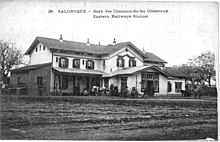.mw-parser-output .hidden-begin{box-sizing:border-box;width:100%;padding:5px;border:none;font-size:95%}.mw-parser-output .hidden-title{font-weight:bold;line-height:1.6;text-align:left}.mw-parser-output .hidden-content{text-align:left}@media all and (max-width:500px){.mw-parser-output .hidden-begin{width:auto!important;clear:none!important;float:none!important))You can help expand this article with text translated from the corresponding article in Italian. (March 2022) Click [show] for important translation instructions.
View a machine-translated version of the Italian article.
Machine translation, like DeepL or Google Translate, is a useful starting point for translations, but translators must revise errors as necessary and confirm that the translation is accurate, rather than simply copy-pasting machine-translated text into the English Wikipedia.
Do not translate text that appears unreliable or low-quality. If possible, verify the text with references provided in the foreign-language article.
You must provide copyright attribution in the edit summary accompanying your translation by providing an interlanguage link to the source of your translation. A model attribution edit summary is Content in this edit is translated from the existing Italian Wikipedia article at [[:it:Storia delle ferrovie in Grecia]]; see its history for attribution.
You may also add the template ((Translated|it|Storia delle ferrovie in Grecia)) to the talk page.
For more guidance, see Wikipedia:Translation.

The history of rail transport in Greece began in 1869, with the construction of the link between Piraeus and Athens with private funding.
The Greek railway network then developed slowly over time, at the initiative of private foreign companies, with the adoption of a four gauge network: 600, 750, 1,000 and 1,435 mm.
Some of the network was inherited as a result of annexation of Greek territory that had been part of the Ottoman Empire.